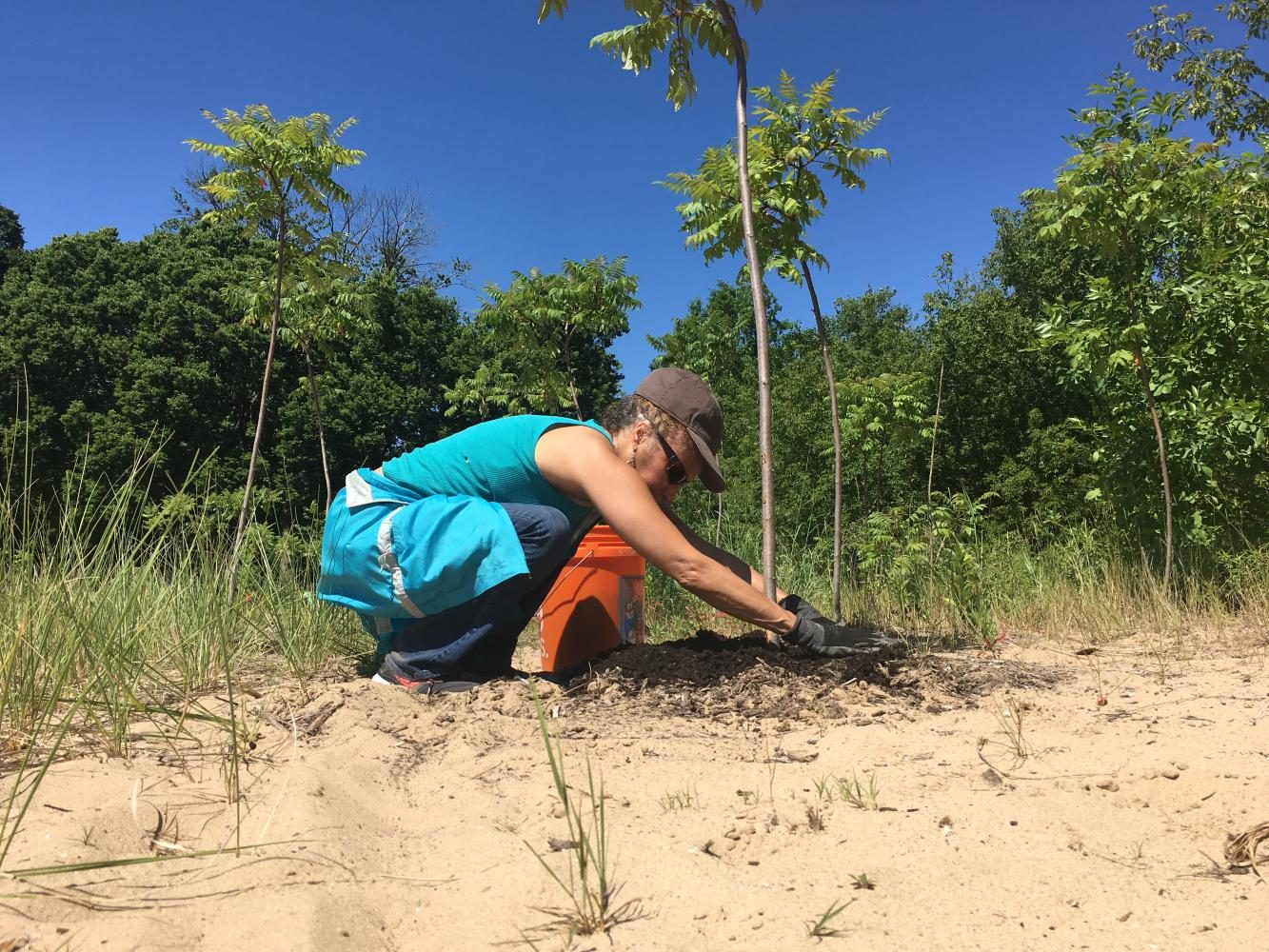Clark Street Beach Bird Sanctuary aims to repair environmental damage
Matt Chilson/The Daily Northwestern
Melanie West helps during a bird sanctuary work session July 8. The Clark Street Beach Bird Sanctuary aims to attract migrating birds after an existing habitat was destroyed by the construction of the Segal Visitors Center.
July 13, 2017
When hundreds of trees were destroyed for the construction of the Segal Visitors Center in 2012, migrating birds lost a stopping point on their routes up and down North America.
Northwestern officials knew the University would have to pay to replace the trees and habitat that the Visitors Center would take out, said Libby Hill, a member of the Evanston North Shore Bird Club.
Club member Jerry Herst said the fee to replace the habitat came to $173,850. Hill said she requested the money be set aside for a bird sanctuary adjacent to the visitors center and behind the Clark Street Beach.
“I didn’t want the money to go into the general fund, and I didn’t want it to go into the parkway tree fund,” Hill said. “I knew that was what would happen.”
As a result, the Clark Street Beach Bird Sanctuary was founded three years later. The bird club hired Kettelkamp & Kettelkamp Landscape Architecture of Evanston to create plans for the sanctuary.
Club members worked with landscape designers to plant trees in the sanctuary in 2015, and they have maintained it ever since.
The bird club welcomes anyone to volunteer at the sanctuary, member Julie Dorfman said.
“On the big days, we have about a dozen people,” she said. “Last month, we had people from the Northwestern athletic department doing the bigger stuff for their day of caring.”
Dorfman said athletic department staff dug holes in the sand so volunteers could plant a stretch of dune grass. All plants and other expenses are funded by donations which mostly come from club’s website.
Herst said the sanctuary project is meant to last well into the future, and the club has plenty of ideas for the sanctuary.
Dorfman said many ideas come from Kettelkamp & Kettelkamp, but the club plans to “play squirrel” by planting acorns from oak trees across the street in the sanctuary.
Ten to 15 years from now, Herst said, he expects the sanctuary to be fully filled in with trees.
Email: [email protected]
Twitter: @3chilson


